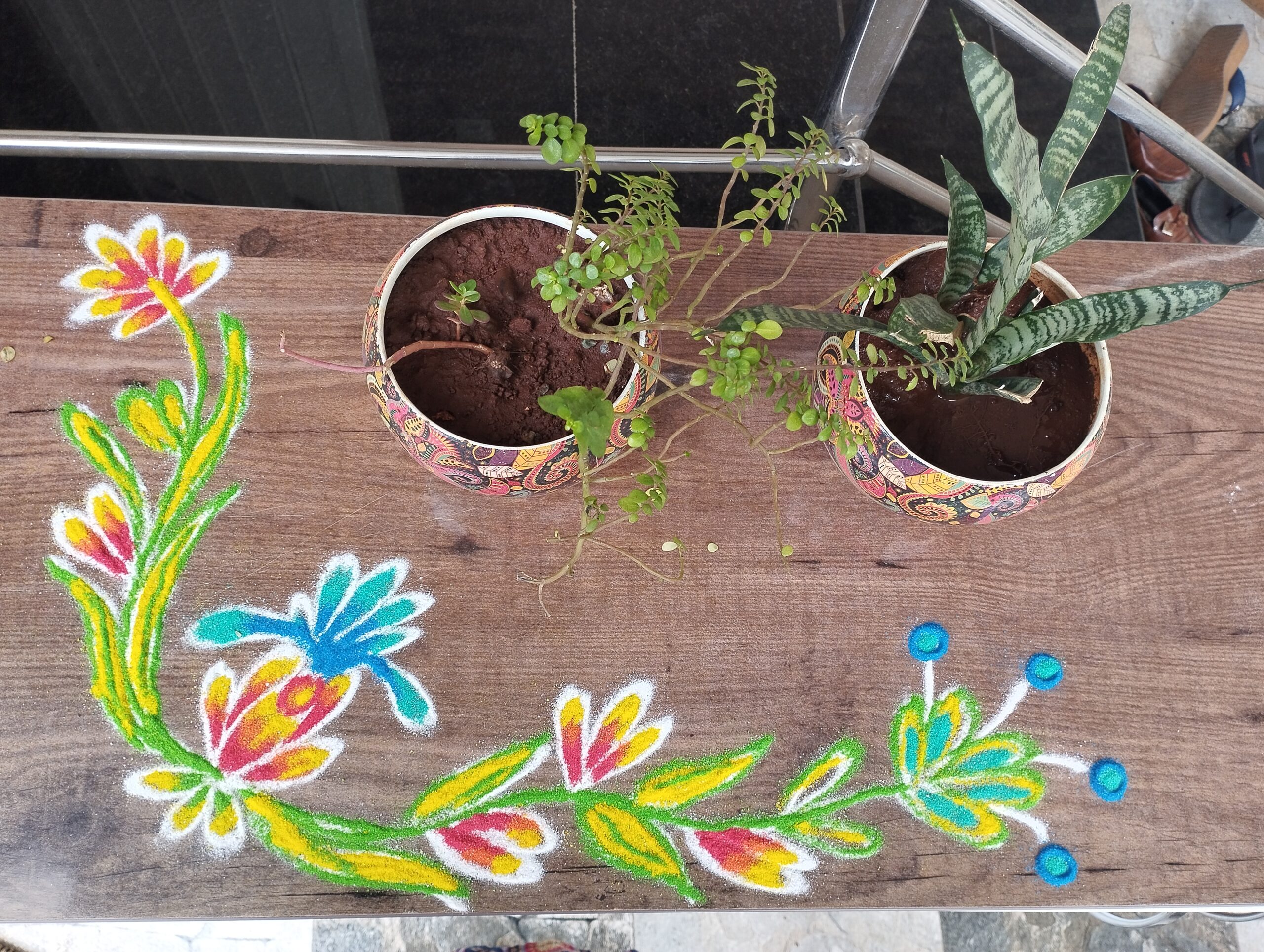Paithani Sadi Rangoli Latest Rangolis
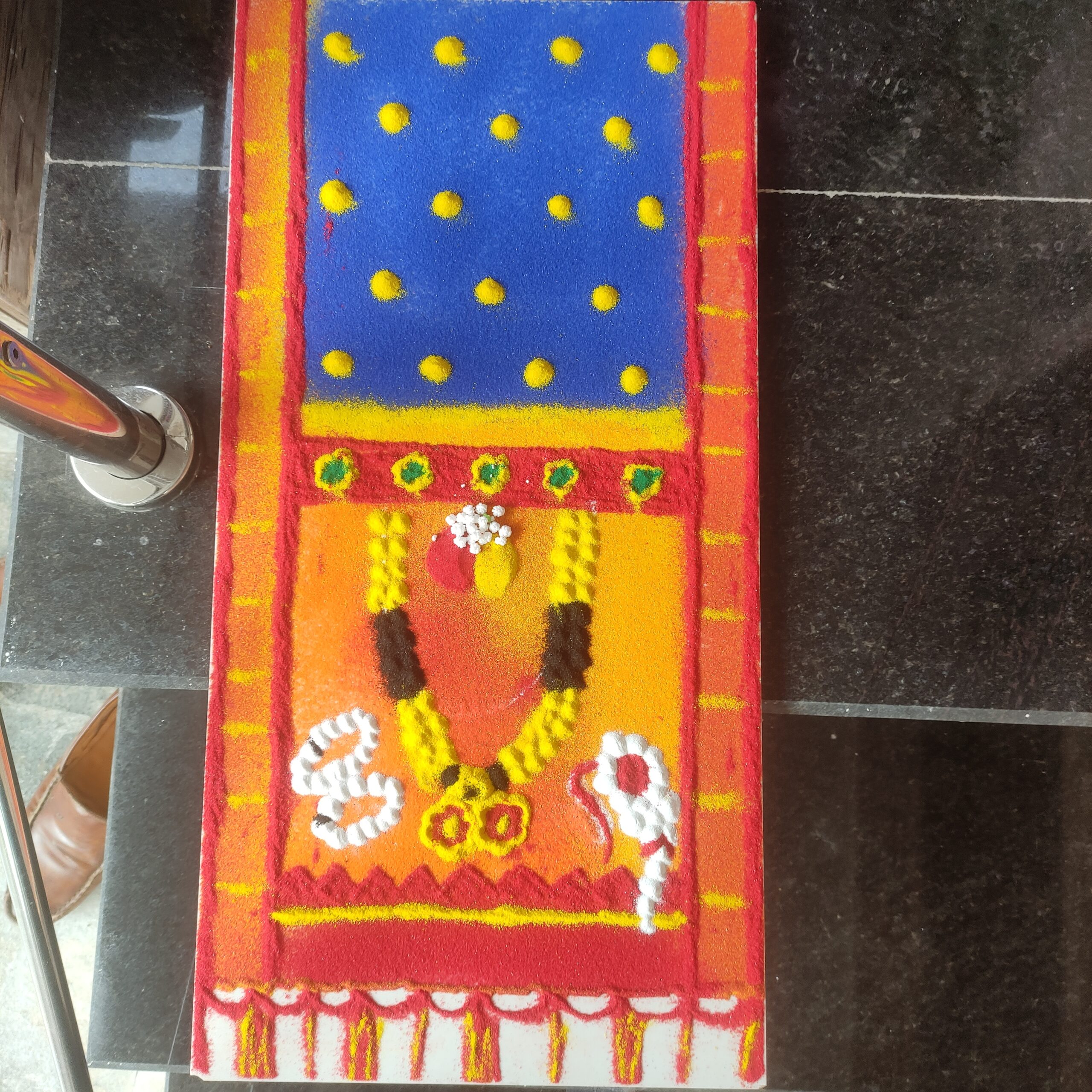
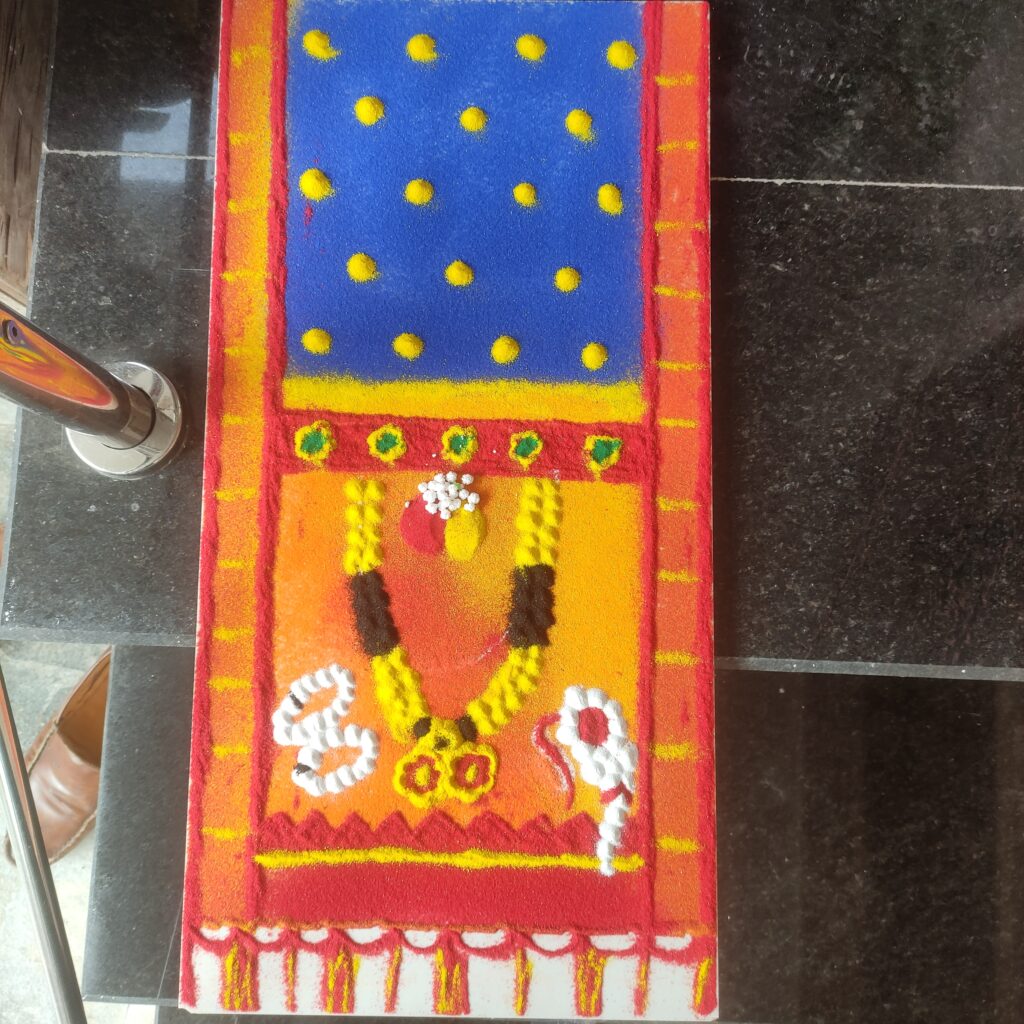
Significance of Paithani Saree in Maharashtra:
Paithani saree holds a special place in the heart of Maharashtrian culture and tradition. It is not just a piece of clothing but a symbol of elegance, heritage, and artistic craftsmanship. These exquisite sarees are renowned for their intricate designs, vibrant colors, and lustrous fabric, making them a popular choice for weddings, festivals, and other significant occasions.
Origin and History of Paithani Saree:
The history of Paithani saree dates back to ancient times, believed to have originated in the town of Paithan, located in the Aurangabad district of Maharashtra. The saree gets its name from this town, which was once a flourishing center of trade and art during the reign of the Satavahanas and the Mughals.
Paithani sarees were patronized by royalty and nobility in the past, and their creation was an art passed down through generations of weavers. The process of making a Paithani saree is labor-intensive and time-consuming, involving skilled artisans who meticulously craft each piece.

Distinctive Features of Paithani Saree:
- Silk and Zari: Paithani sarees are typically made from fine silk, which imparts a luxurious feel and rich texture to the fabric. They are also adorned with intricate zari work, adding a touch of shimmer and opulence to the saree.
- Pallu Design: The most striking aspect of a Paithani saree is its elaborate pallu, which is the loose end of the saree that hangs over the shoulder. The pallu is adorned with intricate motifs, often depicting peacocks, lotuses, or other traditional designs, woven using the tapestry technique.
- Colorful Patterns: Paithani sarees are famous for their vibrant and contrasting colors. The pallu and borders are usually adorned with golden or silver zari work, beautifully complementing the colorful body of the saree.
- Use of Real Gold and Silver: In traditional Paithani sarees, real gold and silver threads were used in the zari work, making them an expensive and precious possession.
- Variations: Over time, different regions in Maharashtra have developed their unique variations of the Paithani saree, each with its characteristic motifs and designs. For instance, the Yeola Paithani is famous for its large peacock motifs, while the Aurangabad Paithani features delicate, small designs.
Symbolism and Cultural Significance:
The Paithani saree represents more than just a piece of clothing. It symbolizes the rich cultural heritage of Maharashtra and the skill and creativity of its artisans. Wearing a Paithani saree is a matter of pride for Maharashtrian women, and it reflects their love for traditional craftsmanship and timeless beauty.
Woman Love to Draw Saree Designs in Rangoli:
Rangoli is an ancient Indian art form where intricate designs are drawn on the floor using colored powders, flowers, or rice flour. During festivals, weddings, and special occasions, women love to decorate their homes with rangoli to welcome guests and bring good luck. Drawing saree designs in rangoli is a popular choice, especially during festivals like Diwali and Gudi Padwa, and for weddings and cultural events.
Why Saree Designs in Rangoli?
- Celebrating Femininity: Drawing saree designs in rangoli is a way to celebrate the essence of womanhood and the beauty of Indian traditional attire. The saree is an epitome of grace, and showcasing its elegance through rangoli is a form of artistic expression.
- Cultural Affinity: Rangoli and saree are deeply rooted in Indian culture. Combining these two elements brings out a sense of cultural affinity and pride, especially for women who cherish their cultural identity.
- Colorful and Eye-Catching: Saree designs in rangoli are visually appealing and add a burst of color to the surroundings. The intricate patterns and vibrant hues create a captivating sight, enhancing the festive atmosphere.
- Symbol of Festivity: During festivals, rangoli represents prosperity and joy. By drawing saree designs, women imbue the rangoli with a touch of traditional elegance, making it even more auspicious.
Design Ideas for Saree Rangoli:
- Traditional Saree Border: Draw a border pattern inspired by traditional saree designs, like peacock motifs, flowers, or paisley patterns. You can use bright colors to highlight the border.
- Pallu and Motifs: Create a rangoli with a central pallu design and complementing motifs along the sides. You can use a combination of colors to bring out the intricacies of the saree.
- Region-Specific Saree: If you are aware of the Paithani saree variations from different regions, you can replicate their unique motifs in rangoli form.
- Modern Fusion: For a contemporary touch, you can experiment with blending modern elements into the saree design, while still retaining its traditional essence.
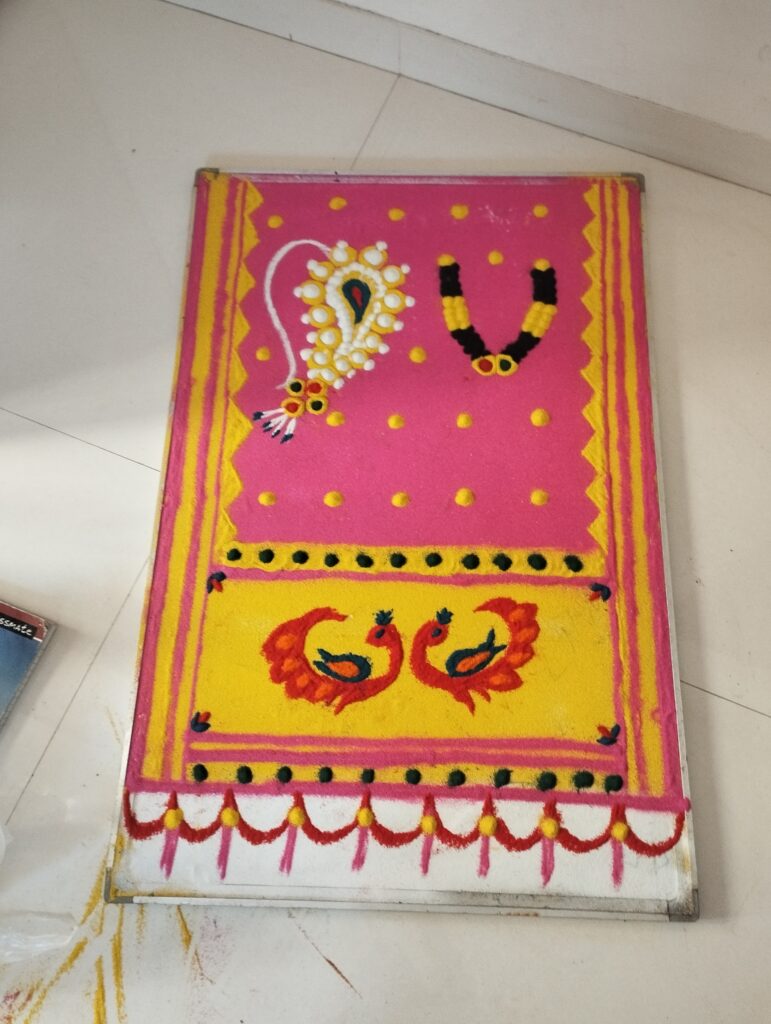
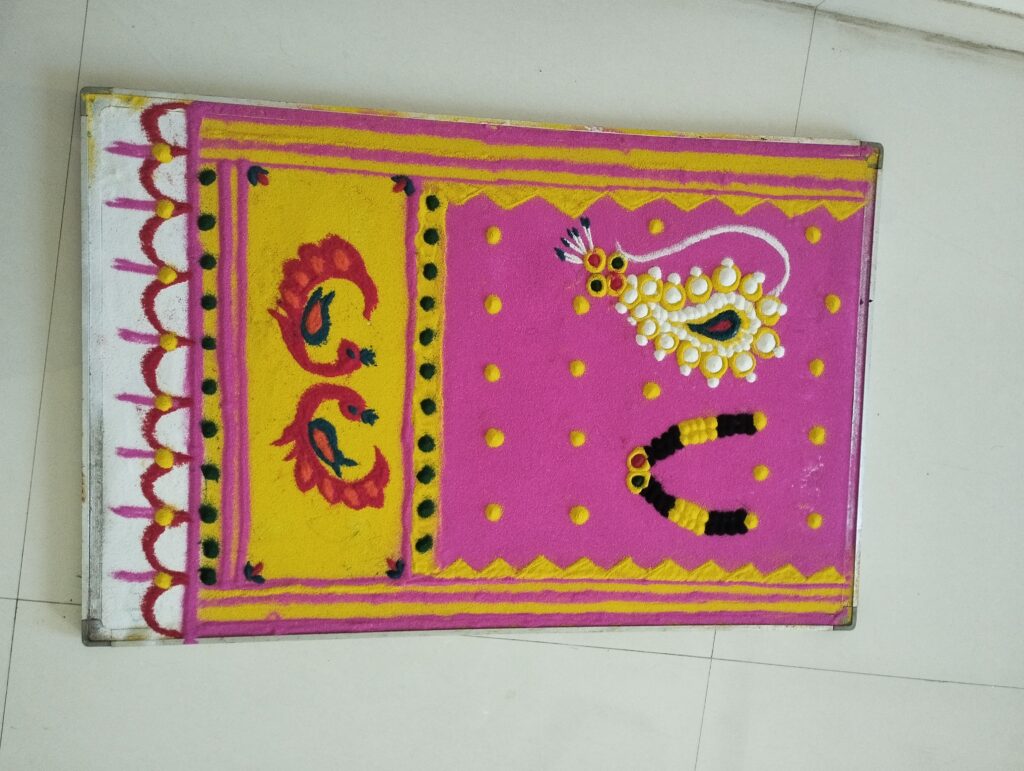
Paithani saree holds a special place in Maharashtrian culture, reflecting the region’s rich heritage and artistic craftsmanship. Drawing saree designs in rangoli is a beautiful way for women to showcase their love for traditional attire and celebrate their cultural identity. As a timeless art form, both Paithani sarees and rangoli continue to be cherished and admired for their beauty, elegance, and cultural significance, making them an integral part of Maharashtra’s cultural tapestry.

